Ground/Work Competition Finalist Entry by EFGH
By Bustler Editors|
Sunday, Sep 22, 2013
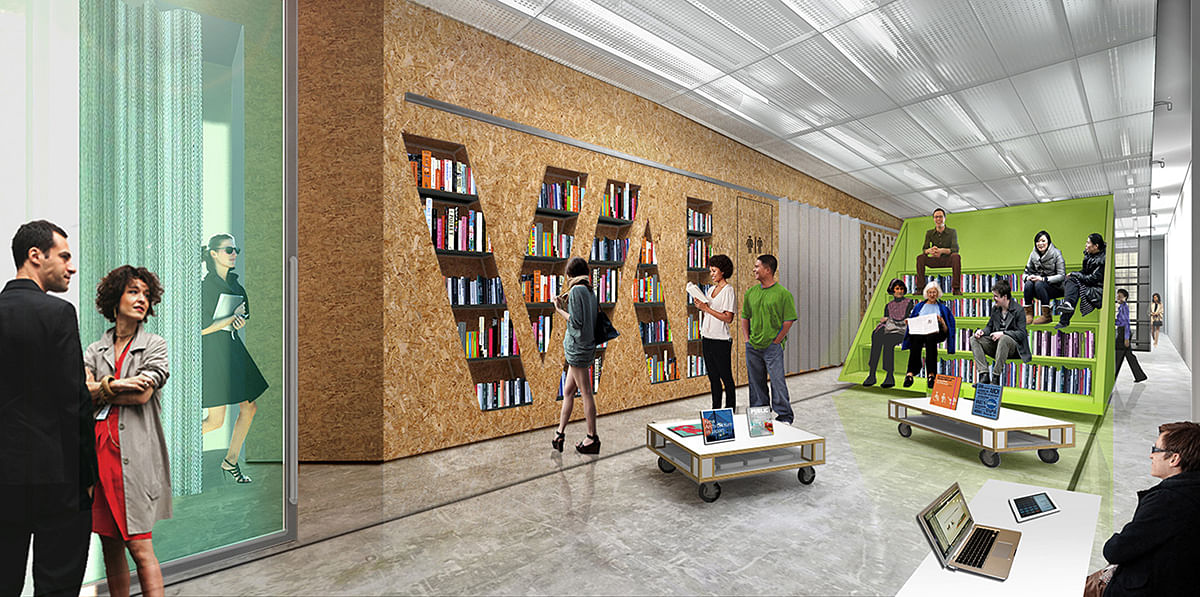
Related
If you've been following the Van Alen Institute's Ground/Work competition along with us for the past few months, then you were probably hoping to find out who the winner is by the end of this past week. However, we received word from the organizers that we'll have to wait for the big announcement until Monday.
So while we sit tight for a little longer, we're excited to share an in-depth look into another finalist entry, this time from EFGH.
For the new Van Alen street-level space, EFGH proposed a flexible multi-purpose space with moveable components that maximizes the existing proportions of the site. According to EFGH, the new space should embody the Institute's ambition of expanding the definition of public architecture and its relationship with its urban-life surroundings.
Keep scrolling to check out the project images and description that EFGH sent us.
Project Description:
"Interior = City. A microcosm of the space of the city, the new Van Alen Institute is imagined as a container for dynamic life. As an institution committed to the expansion of the definition of “public architecture” and the processes that shape the public realm, the VAI needs a home that embodies that ambition. Recognizing the dramatic proportions of the existing site as an opportunity, the proposed new Ground/ Work space turns a long skinny ground floor volume into a virtue: it maximizes the street level space, creating a single room - a large “grand hall” - that strives to reach the scale of the street, and extend the life of 22nd Street into the heart of the Institute."
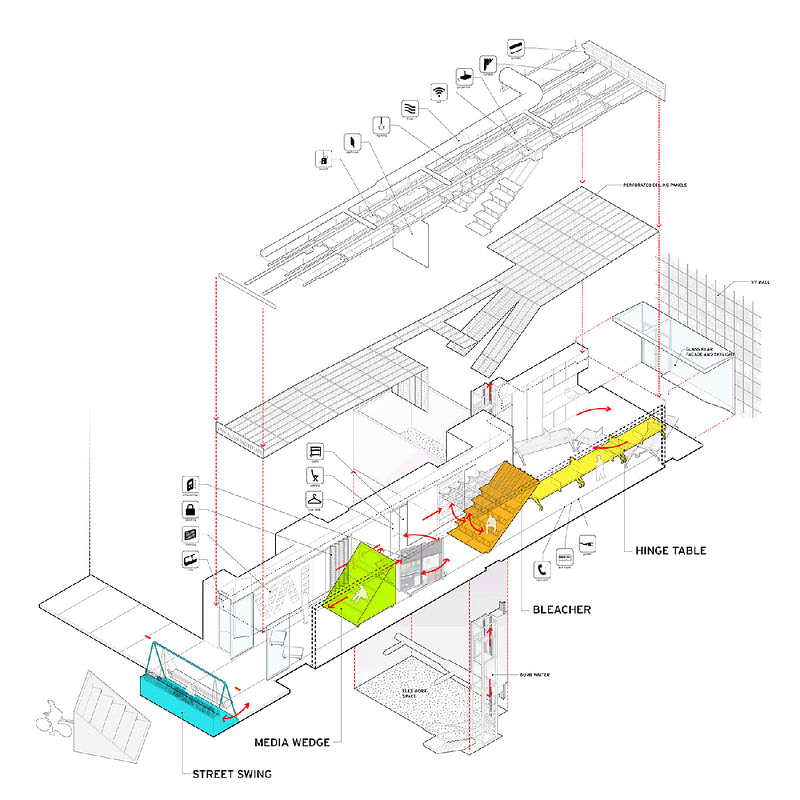
"Through the easy manipulation of three mobile components in the space, The Media Wedge, The Bleacher and the Hinge Table, the VAI can be radically transformed by a few employees in a short amount of time. When one asks “What is the new space of the Van Alen Institute; A Workspace, Exhibition space, Lecture Hall, Book/ Media Outlet, Public Forum, Conference space, Performance Space or Party space?” The only suitable answer is All of the Above."
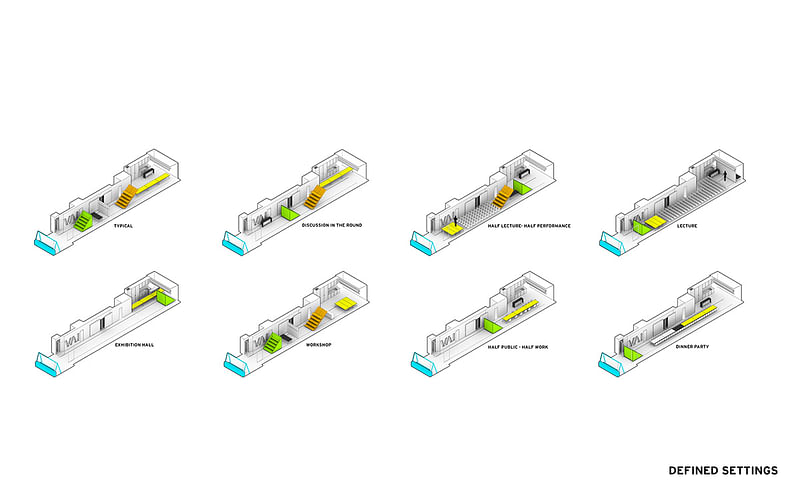
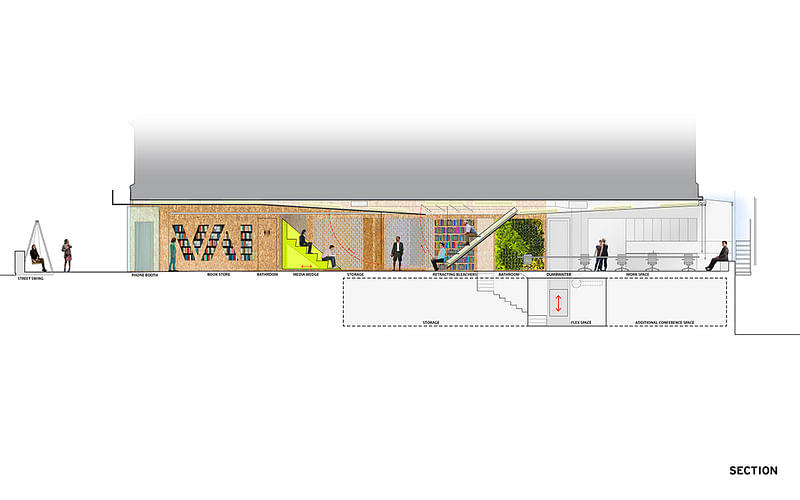
"In order to activate and serve the various programmatic needs of the Institute, the two most dominant are treated as spatial “canvases”: a smart ceiling and a dumb floor. The ceiling is a shallow volume clad in a lightweight perforated skin. It houses all of the infrastructure (air, light, A/V) necessary to support a 21st century workspace and public forum. Through the thoughtful design of technology strategies, the long-term thinking of “designing for future unknowns” is embraced. The floor is tough; a durable continuous surface is the playing field for a small number of dynamic elements to be variously positioned to establish a defined range of programmatic and spatial settings.
When exhibitions take place at street level, a flex space is activated on the lower level to house the office functions. Once these functions re-emerge at the end of a show, the staff has the opportunity to set their space up differently, experimenting with a variety of layouts. In addition, the seasonal street seat on the exterior creates a “room” on the sidewalk. Defined on one side by the storefront of the VAI and the other by a suspended communal park bench, pedestrians occupy a zone that is intensely public and open, and at the same time part of an extended interior, asking them to pause and consider their role within that public realm."

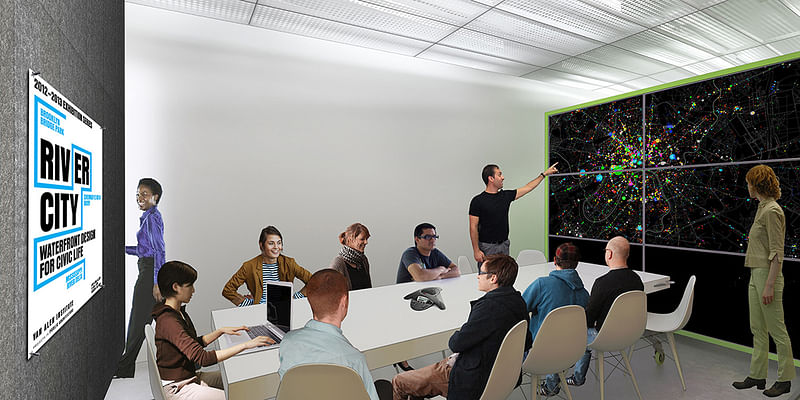

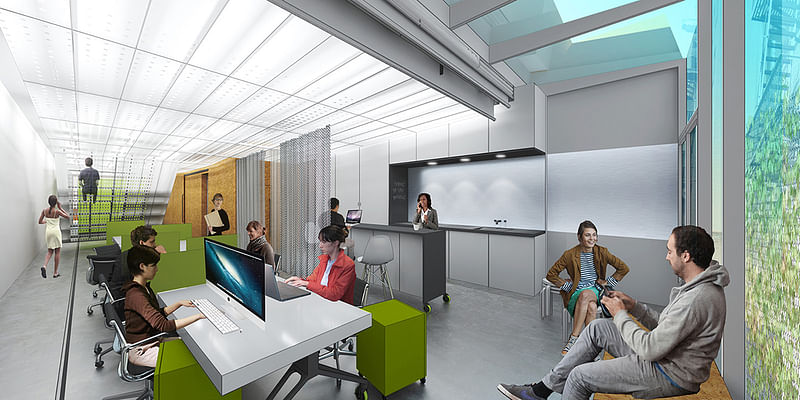


"An inherently sustainable strategy, the flexibility provided here allows for a multiplicity of functions to happen in a limited amount of space. In addition, local design excellence is leveraged as we seek to engage artisans within New York City and the Hudson Valley for the production of this project.
The new home of the Van Alen Institute will be an asset to the public and intellectual life of the city. The space described above, through its balance of design and indeterminacy, will remain poised to support, and indeed participate in, the life of the city. Beyond a mere container for events, the new home of the Van Alen Institute will be an actor in those events. It will participate."
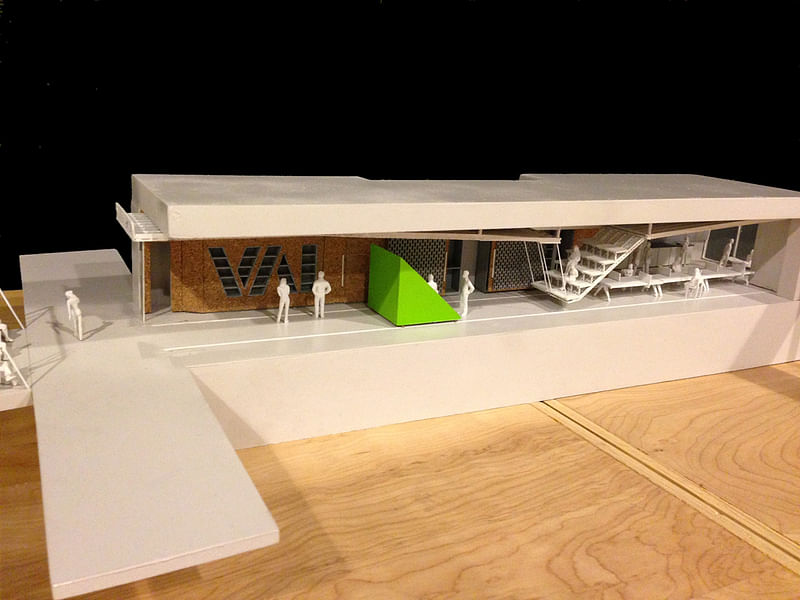
Team Description:
"The architectural team is led by EFGH, a New York-based architectural design practice founded in 2007 by principals Hayley Eber and Frank Gesualdi. We have assembled a team of consultants, whose skills and experience will enable us to deliver a robust and compelling project. EFGH is partnered with sustainability consultants Buro Happold, technology and A/V consultants Control Group, steel fabricators The Orchard Group and cost estimating and construction services by Cross Management Corporation."

Click here for more info.
And don't forget to check out the thumbnail gallery for more images.
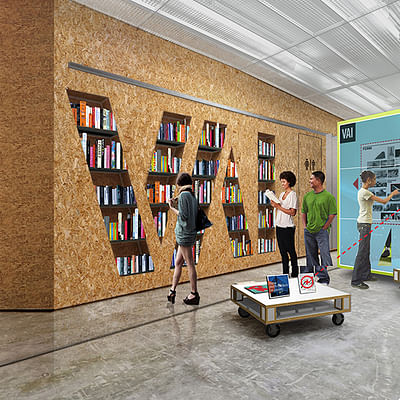


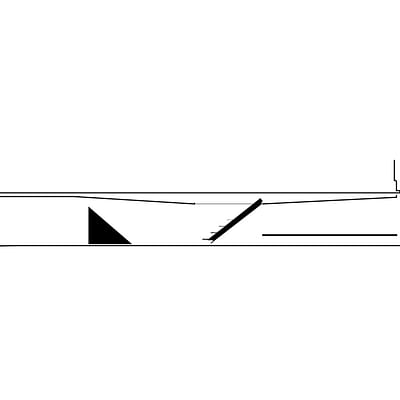

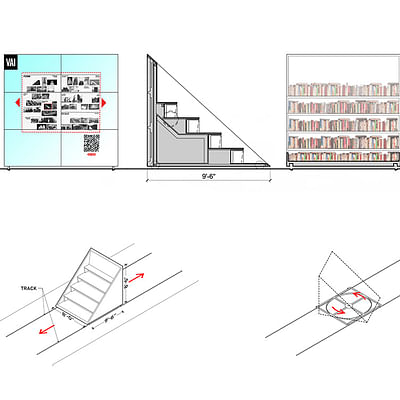
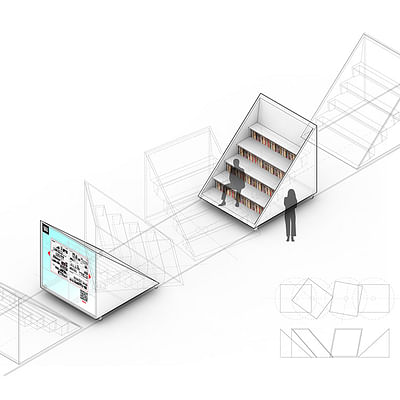
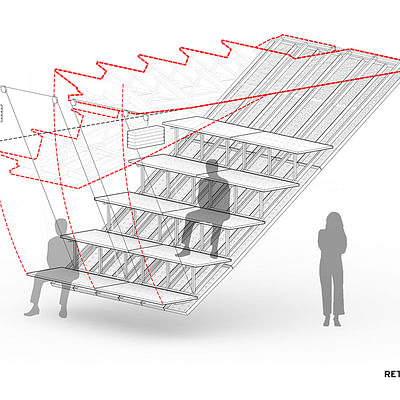
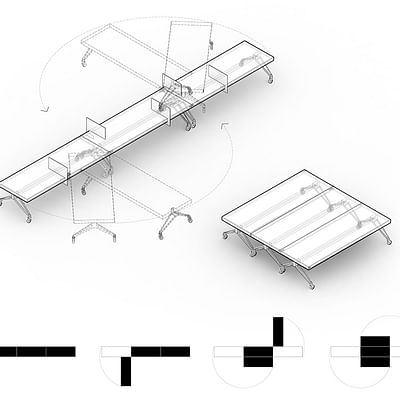
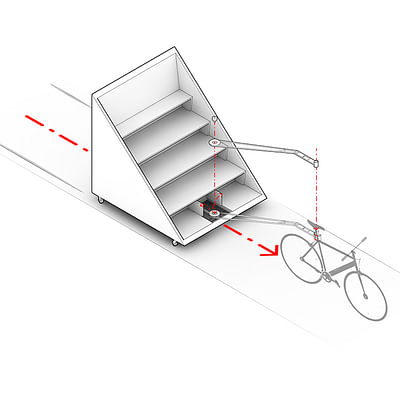

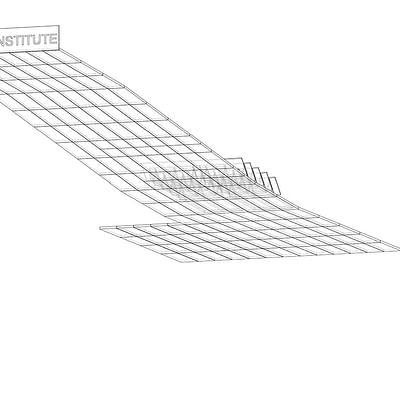
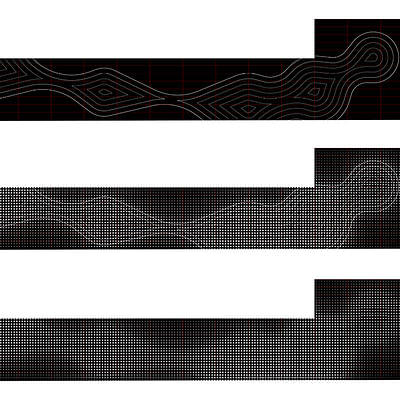

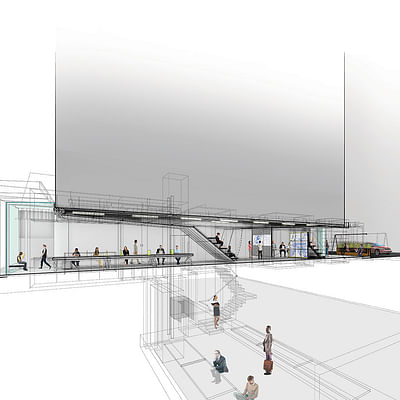
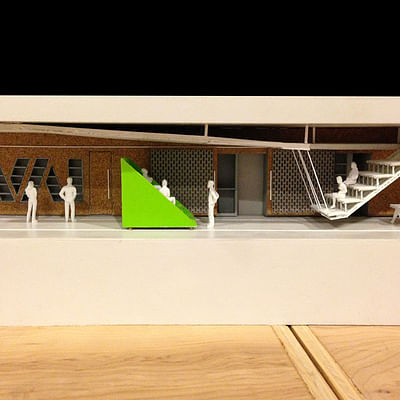
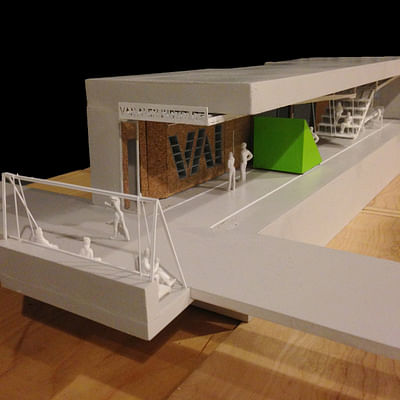
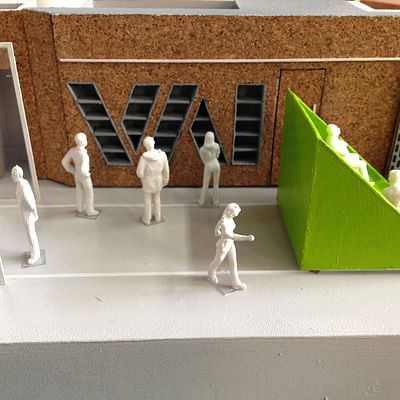

Share
0 Comments
Comment as :